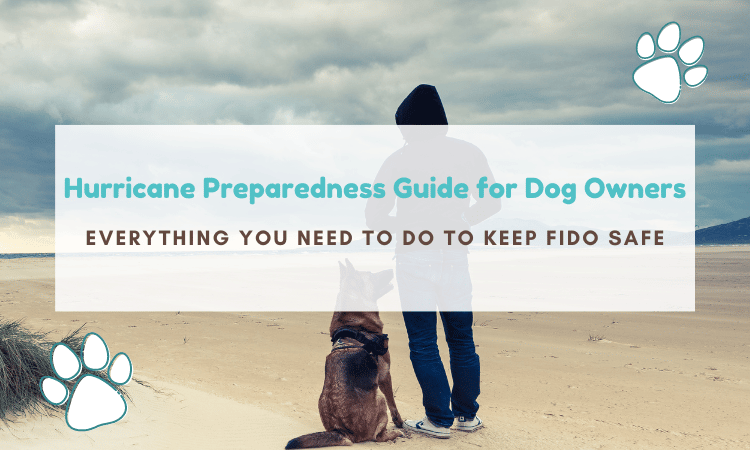In addition to the COVID pandemic, we’ll remember 2020 as the year of the hurricane. After blowing through the 26 Latin characters, Tropical storm names reached into the Greek alphabet
If you live in an area that’s susceptible to hurricanes, you probably understand the importance of preparedness for your family and home. If not, take a note from history:
It was 10:00 AM on August 28, 2005, when the Mayor of New Orleans announced an emergency evacuation for Hurricane Katrina. Many people weren’t prepared to leave on short notice. The freeways were jammed for days. Individuals left so quickly they left behind family records, heirlooms, and pets because they expected to return in a matter of a few days. However, the storm surge overpowered 53 levees, and residents weren’t able to return for about 3 weeks. Then they got the news that Hurricane Rita was heading their way and had to leave again.
Amidst all the confusion, over 600,000 animals were abandoned or died as they fended for themselves through the storm. 7 years after the catastrophic event, the Atlantic reported that many parts of the city remained in ruin and feral dogs are rampant.
What can you do to ensure your pet’s safety and care during a major storm event? Below are some tips to help you with hurricane preparedness.
Stay Well Informed
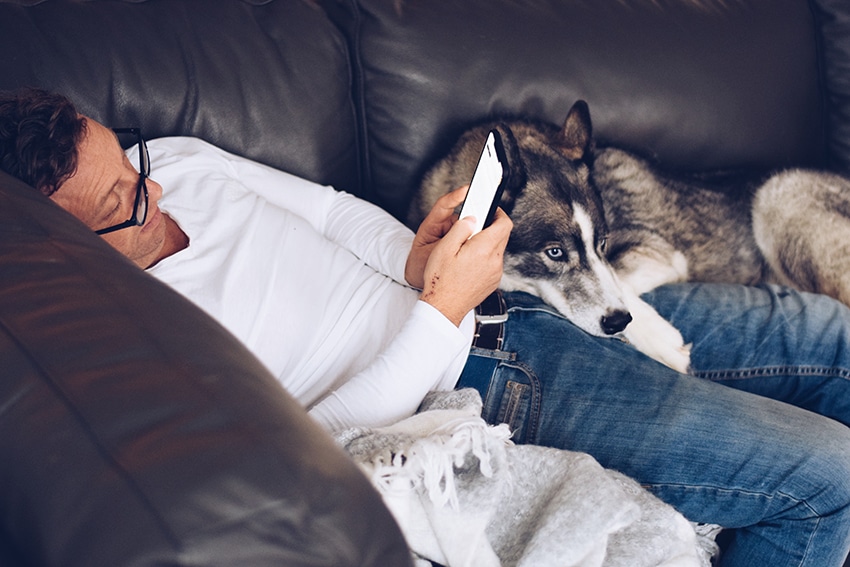
No matter where you live, you need to be aware of threatening weather events. Learn which disasters require evacuation and when it’s safe to shelter at home if you’re in a hurricane zone.
Follow weather forecasts and storm tracks. Consider investing in a NOAA receiver and tuning it to your local weather emergency channel. If you don’t have a weather radio, monitor your local TV and radio stations. Always pay heed to mobile alerts and warnings.
You can also download the FEMA app to get alerts from the National Weather Service. The site will allow you to request updates from any five different locations in the United States.
Complete a Pet Rescue Alert Sticker for Your Front Door
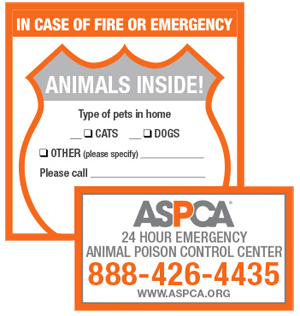
Invest in a Pet Safety Pack or a “Rescue Our Pets” kit that includes a sticker that you can fill out and attach to your front door in an easy-to-see location. Include vital information such as the types and numbers of pets in the house, your contact information, and the name and number of your veterinarian. If you’re able to take your furbabies with you, you can write “evacuated” over the sticker to let rescue workers know that your animals are safe.
Keep Up With Heartworm
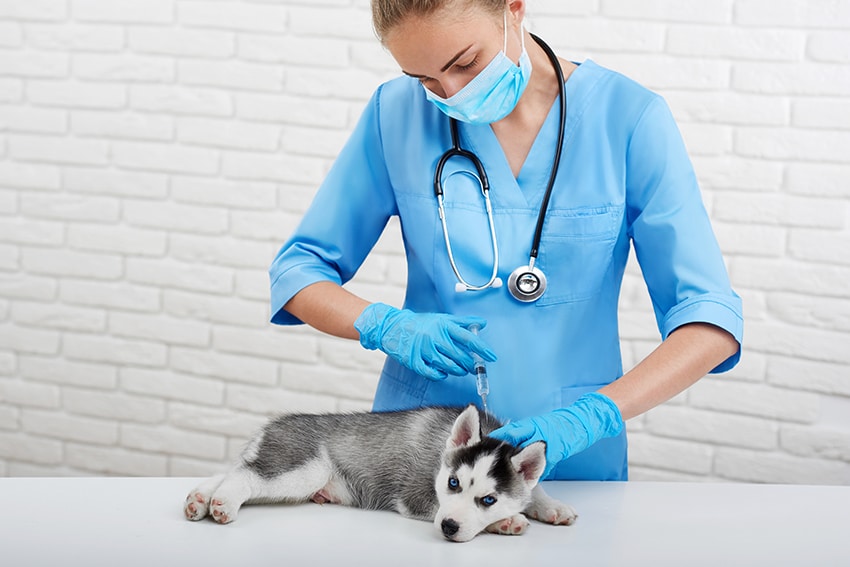
It’s common for flooding to occur after a hurricane, and the extra water provides ample breeding ground for mosquitos. That puts our canine companions at a higher risk of contracting heartworm disease. Make sure you give your pup heartworm medications on a regular schedule and make sure you have a sufficient supply in stock.
Stay Current On Vaccinations
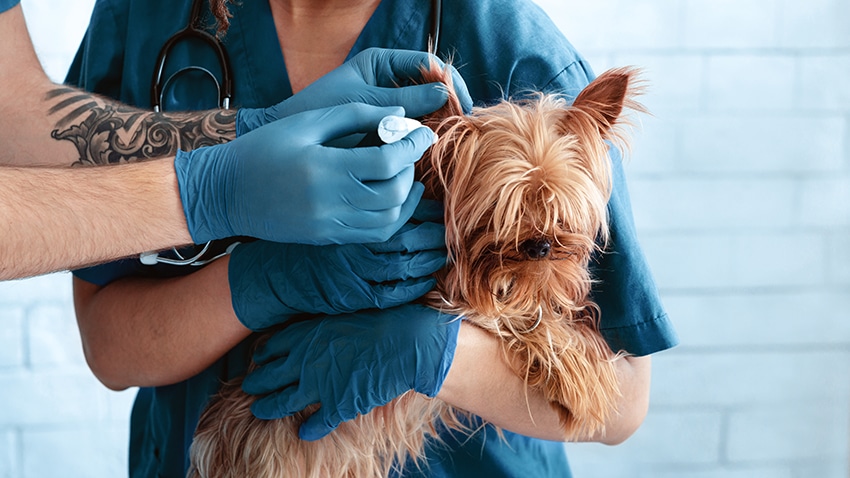
In addition to keeping up with heartworm medications, make sure your furbaby is up-to-date on his vaccinations. More wild animals may be roaming deserted streets after a storm, and the stagnant puddles can harbor dangerous bacteria. Some diseases of concern that your pal could catch in the hurricane’s aftermath include coccidia, distemper, leptospirosis, and rabies.
Pack a Hurricane Emergency Kit and Travel Supplies
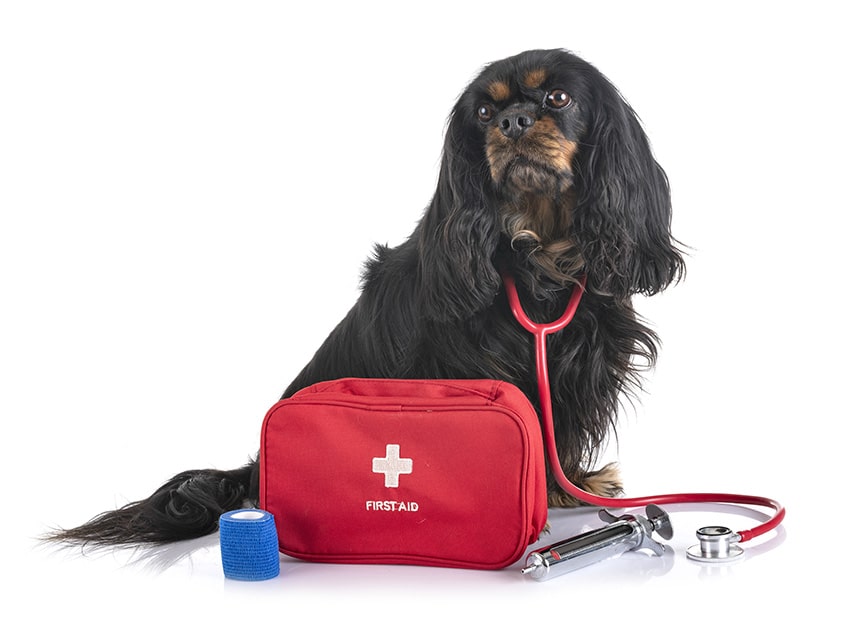
You may have to leave the house quickly if there’s a hurricane emergency. Having an emergency kit and bag of supplies ready to go can help you be more prepared for stressful circumstances. So, don’t put off packing your stuff until it’s too late.
As you pack your kit, remember to plan for the worst-case scenario. You might think you’ll get back in a day or two, but what if it’s weeks before the roads reopen? The last thing you’ll want to do is stand in a long line at the local Walmart or Kroger to get bottled water and other basic supplies.
Most of the things you’ll need for your dog will also be supplies you’ll need for yourself. Pack your dog’s emergency kit now and include:
- A Pet First-Aid Kit – Pets may sustain injuries and require first-aid care as a result of a hurricane and ensuing storms. You can talk to your veterinarian about what you need in this pack.
- Bottled water – Don’t plan to share your water with your pooch. Have enough on hand for a 7 day supply for each person and each pet.
- Non-perishable food – Include a can opener if needed.
- Disposable trays for litter – Aluminum baking or roasting pans are a good option.
- Garbage bags to collect trash
- Paper towels
- Liquid dish soap
- Bowls for food and water
- A spare non-retractable leash – Retractable leashes don’t offer as much control as a sturdy 6 or 7-foot tether. And durable leather or nylon leads are less likely to snap if your pooch panics.
- Glow in the dark harness and collar – Even if you don’t normally use this gear, it can come in handy in an emergency. Your pal will be easier to see in extreme weather conditions.
- Medical records on USB or photocopies in a file
- 2 week’s worth of medications – Pack these in a water-tight container to prevent damage.
- A crate, carrier, or travel bag – If you have multiple pets, It’s best to have one for each animal.
- Flashlight
- Blanket
- A favorite toy to help soothe your anxious pup.
Every family member should also have a personal emergency supply kit ready to go. Include:
- Flashlight and fresh batteries
- Duct tape
- Battery-operated radio
- Tarp
- Rope
- A multi-tool
- Baby wipes
- Protective clothing and boots/footwear
- Permanent marker and spray paint
- Rescue whistle
- Extra cash
- Extra medication in a water-tight container
- A list of important phone numbers
- Copies of insurance information and any medical alerts/information
There are some other things that you can do to keep your evacuation calm and orderly. First, make sure your pal’s identification and emergency tags are current and accurate. Include your pup’s name, your contact information, and any medical alerts.
As soon as you see a storm brewing, bring your furbaby indoors. Dogs are incredibly sensitive to harsh weather, and it could cause extreme anxiety. Some animals will wander away from home under these circumstances.
Get Your Dog Microchipped
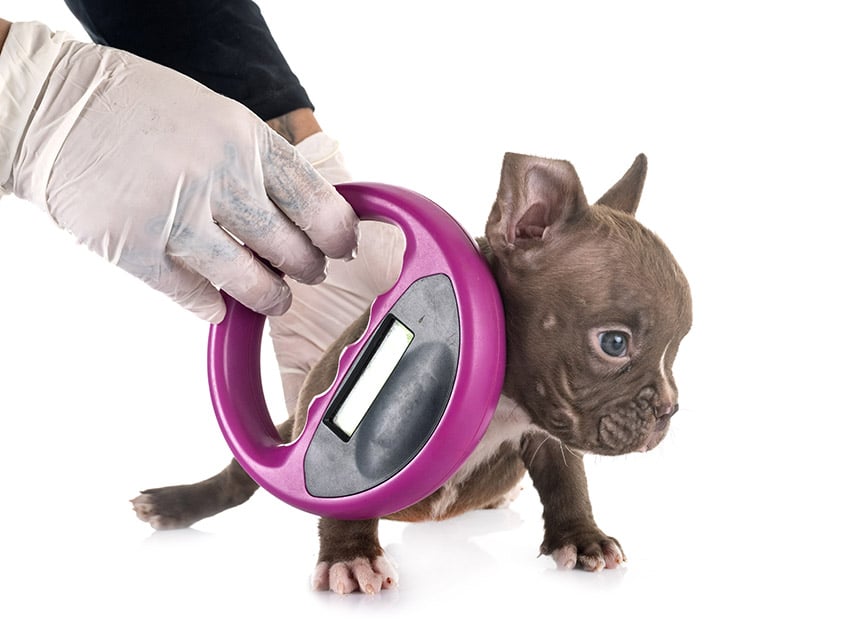
Microchipping provides the most permanent form of identification for your furbaby. It’s still good to use a collar and tag for faster identification. However, if you and your four-footed friend are separated in the chaos of a hurricane, you won’t have to worry about snapped collars or lost tags when you microchip your dog. Remember to keep all contact information current both on physical tags and with the online database for your microchip.
Make ID Files for Each Pet
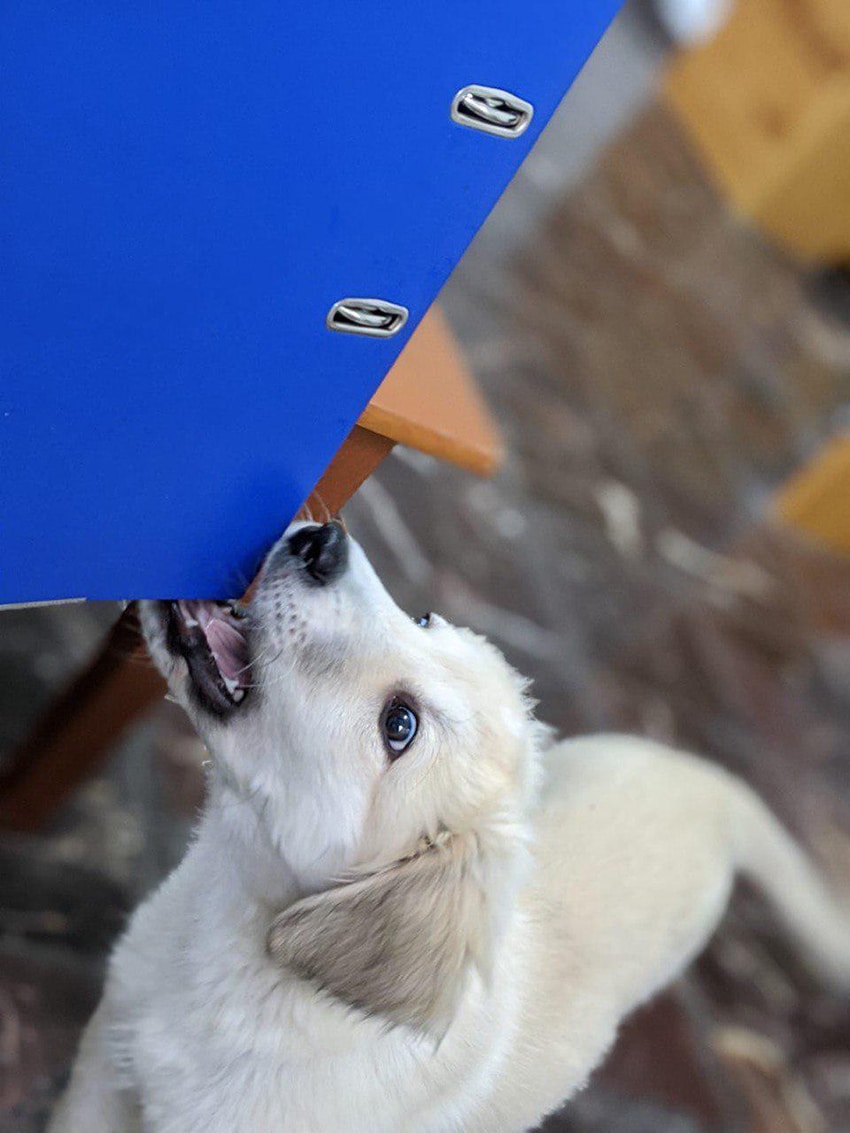
An added protection from permanent separation from your beloved family members is to create an identification file for each furbaby. Store the information in a waterproof file and keep it with the evacuation kit. Include
- Photographs of you and your furry friend that you can show to a shelter to retrieve your special pal
- Any adoption papers
- Microchip numbers
- A written description of your pooch including distinctive markings
- Diet and medication details
- Vaccination history
- Any personality and behavioral issues
Be Proactive About Prevention
Before the Storm
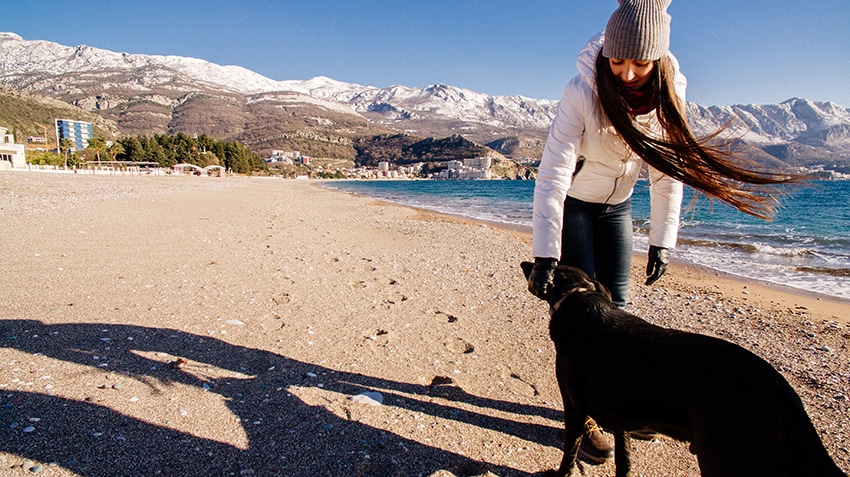
The heavy rains and floods that accompany hurricanes increase the risk of diseases like leptospirosis and heartworm spreading among already stressed pets. Not to mention that if your evacuation stretches beyond a few days to weeks, you may need to find temporary accommodations for your pooch. Kennels and shelters may expose your furbaby to parasites like fleas and contagious illnesses such as kennel cough.
Be proactive about your pup’s health by planning ahead for the unexpected. Speak with your veterinarian about common illnesses in your community and provide preventative care. Stay up-to-date on anti-parasitic medications and vaccinations to support your pal’s health.
During and after the storm
Make sure your furry friend has access to potable water and fresh food. Waters from flooding frequently harbor parasites, mold, bacteria, and other contaminants, so don’t let your pooch drink from puddles, streams, or any other source that you wouldn’t feel safe drinking from. You’ll also want to ensure that you store food in waterproof containers to prevent any potential contamination. If your sources of food and water for your pooch aren’t safe, check with rescue workers to see if there’s a local shelter that can provide your pets with needed disaster relief.
Run Evacuation Drills With Your Pooch

One of the reasons dogs get nervous in an emergency is that nothing is familiar. You can help prepare your pooch by practicing evacuation. Crate train your pets so that it’s a safe haven for them. Practice leaving and transporting your pal in the vehicle you’d be likely to use for an emergency. If you live in a major urban area and don’t own a car, talk with your neighbors or check with the local government to find out about their disaster plans and transportation options.
Depending on your furbaby, you may also want to practice catching them and placing them in a crate or carrier. Be aware of Fido’s favorite hiding places when he’s scared or stressed. Include all family members in the drills so that everyone knows where to find hiding pets, how to safely capture and secure them, what items to bring along, and where to meet everyone.
Have Pet-Friendly Shelter Arrangements Ready
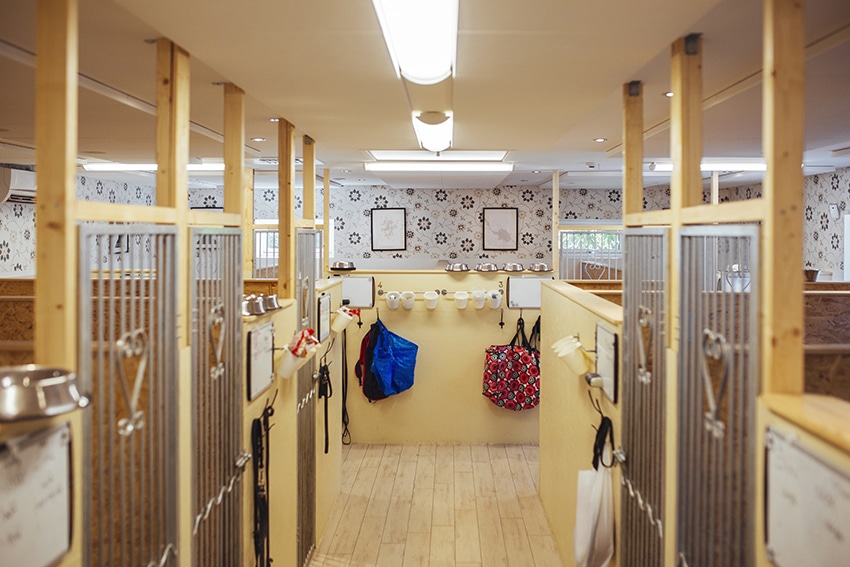
If you have to evacuate, NEVER leave your pets behind. It’s no safer for them than it would be for you. In their anxious state, they could injure themselves, become trapped, or escape and be exposed to even more dangerous situations.
If you have to go to a shelter, it may not accept pets. So, you need to know in advance where you can take your canine companion in an emergency. Check with your veterinarian and local shelters to see where you can find boarding kennels and shelters that offer emergency or foster care. You can also call area motels and ask about pet policies or talk with friends and relatives who live outside of your community about providing a temporary home for your pets.
Designate Pet Guardians

You’ll want to take some time thinking about which people can responsibly care for your furbaby. There are two types of guardians to consider.
The first is a temporary caregiver who lives nearby. Find a trusted friend, neighbor, or relative who can be available when you’re working or otherwise away from home. They’ll need access to your home, so you’ll have to give them a set of keys or the code to your security system. Neighbors with pets are a good option because you may be able to trade pet-watching duties.
In the event that you are no longer around or able to care for your pet, you should also select a permanent guardian. While it may be the same person as a temporary caregiver, you’ll have extra considerations when choosing a foster home. Find a person who knows your pooch and has been able to provide quality care in the past. They should know the expectations that you have for your furbaby and be willing to meet them. You may want to include the arrangement in your will or other personal papers.
Protect Your Pets During Evacuation
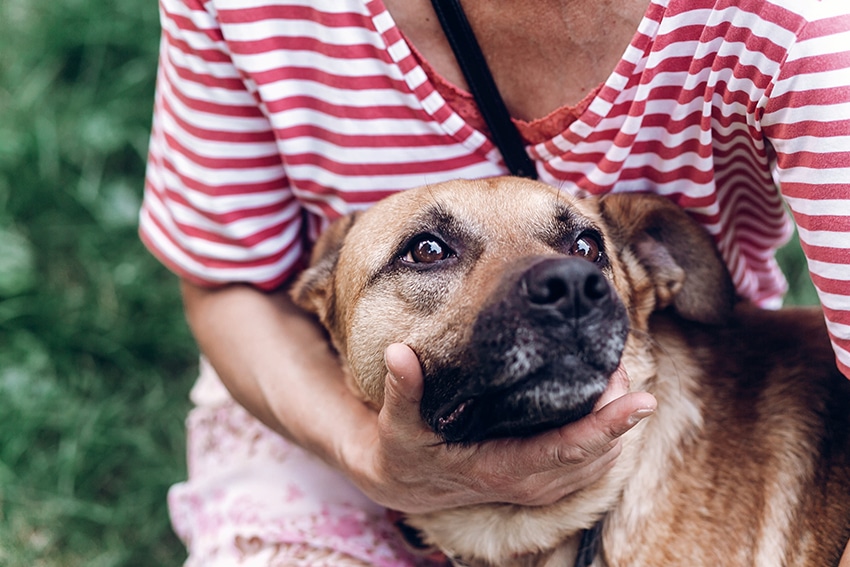
The best way to keep your pets safe during an evacuation is to secure them in a carrier or crate. For most dogs, the enclosed space will be calming, and it prevents them from running away out of fear and getting lost. Bear in mind that Fido may not behave normally under unusually stressful circumstances. You should practice placing your pooch in the carrier and transporting them under normal conditions so that they know what to expect. Make sure you also have a collar and leash to securely handle your pooch whenever you need to transfer them to their temporary shelter.
When you’re evacuating with your pooch, remember to pack the hurricane disaster kit and bring copies of medical and vaccination records. That way, if you need to put your pup in a shelter or kennel, you’ll have any required paperwork on hand.
Anticipate Anxious Behavior
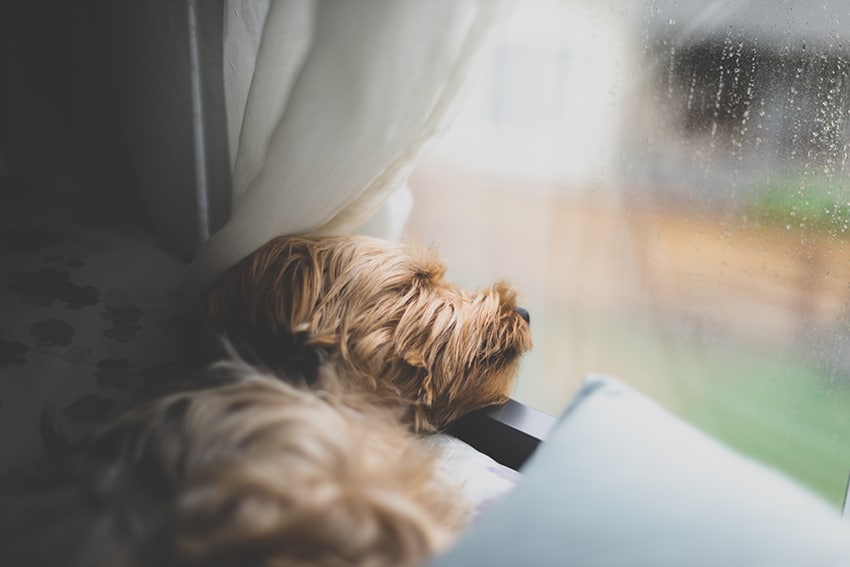
We’ve mentioned dogs tend to be sensitive about storms. I have one pooch who will wake me up in a thunderstorm to go into the basement with her. When a dog is extremely nervous, their behavior can be altered.
Be prepared for your pup to act defensive or aggressive in the chaos. He may also be at a higher risk of being easily spooking and bolting through an open door. This can spell trouble as panicked pups can run a long distance before stopping, and by then they’re usually lost and disoriented. That’s why you need to keep your furbaby close and well-restrained to help calm him during a hurricane’s landfall.
Plan for Potential Injuries
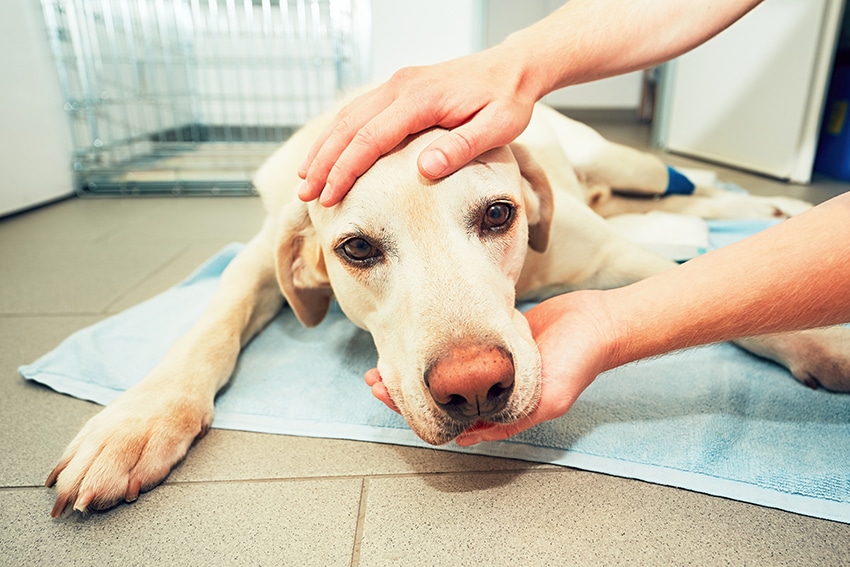
We don’t like to think about injuries, but they can happen in an emergency situation such as a hurricane evacuation. If your furry friend sustains an injury, first make sure you’re out of danger.
Once you get to a safe location, assess your pup’s condition. Do you have the supplies you need in your pet first aid kit to care for your pooch, or will you need extra help? Meg Burke, an emergency response technician with the US-based Best Friends Animal Society, recommends storing the numbers of at least three veterinarians in your mobile phone contacts. That way, if Fido’s normal doctor is unavailable in the disaster, you have a back-up plan for emergency care. Be sure to include contacts that are outside of the evacuation zone. Depending on the injury, some doctors may be willing to provide assistance over the phone if you’re sheltered in place and unable to get to their clinic.
What To Do If You Don’t Evacuate

If you’re not under evacuation orders (we don’t recommend staying in your home if you’re ordered to evacuate), you should still consider some things.
First, even low-level hurricanes have winds powerful to topple trees or knock branches down. Check your property prior to hurricane season and make sure you do any needed tree pruning and maintenance. You’ll also want to ensure that you have storm shutters or similar window treatments in good working order to help protect you and your furbaby.
During the storm, stay tuned to news and weather. You can use a TV or computer as long as you have power. Otherwise, have a battery-operated radio ready to go. If floodwaters are rising in your community, move to the highest point of the home with your pet. Bring your emergency and first aid kits with you so that they’re readily accessible. Remember to keep away from windows or other places where you could be at risk of being hit by flying objects.
We can’t stress the importance of advanced planning enough. Know the safest parts of your home, and pack an emergency kit before any storms come. Being prepared may be the difference between life and death.
After the hurricane subsides, you and your canine companion may be trapped in your home. Streets are frequently impassable following a major storm as rescue workers scramble to clear downed trees, branches, and power lines. That’s why you need a ready supply of food and bottled water that can sustain you and your furry friend for at least a week.
When you take your pooch out for walks or to relieve himself, continue to keep him close and on a leash. Watch where your pal walks. There are probably still several hazards that you’ll need to watch out for such as active power lines, broken glass, and snakes. Remember, clean-up takes time, and you may be without power for a week or more. Be prepared for any circumstance.
Keep Calm
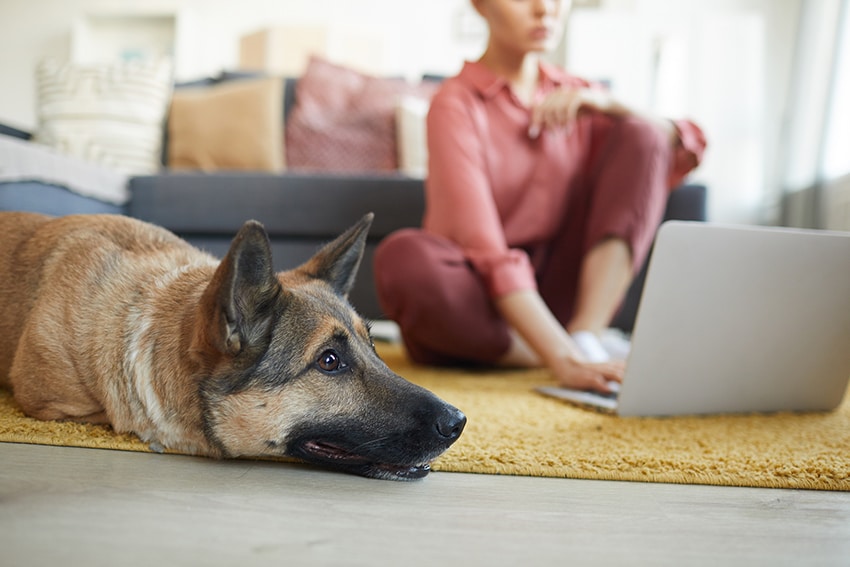
Set the tone for your furbaby by controlling your emotions. Dogs can sense and may feed off of our anxiety. A calm, steady demeanor may help prevent Fido from panicking. Remember, with their sensitivities, they’re probably feeling anxious already. Even a normally friendly, even-keeled pooch may try to escape or become defensive in the chaos. Approach your furry pal warily and use slow, methodical movements.
Something that may help your furbaby to manage the high-stress circumstances is an anxiety-relieving aid such as a natural supplement or a calming vest. Consider adding these items to your emergency preparedness kit.
The Bottom Line: Be Prepared
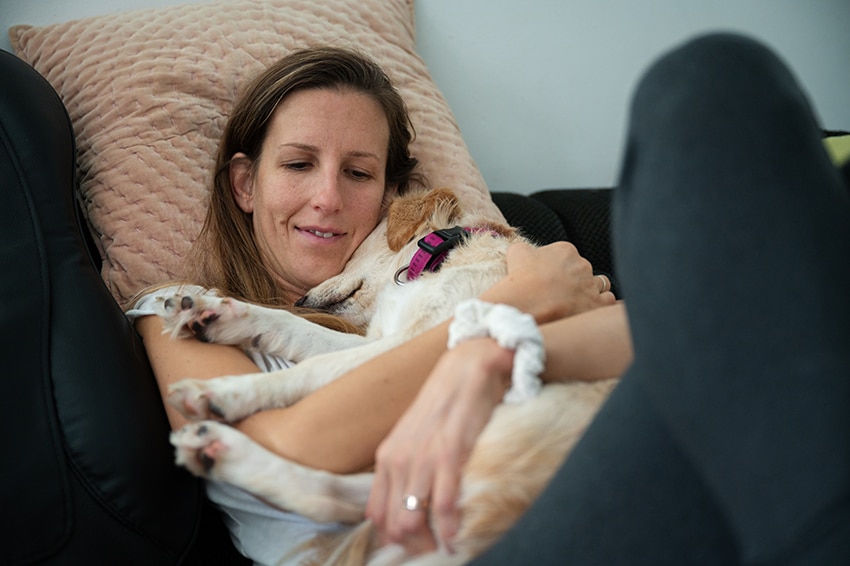
If you live in a hurricane-prone area, the best way to keep you and your furbaby safe is by being prepared. Have an evacuation kit and important records ready to go and make sure that Fido is current on medications and vaccinations. Know where you can take your pooch for temporary housing if you can’t keep him with you. Following these and other tips listed above can help you manage the disaster in the best possible manner.

